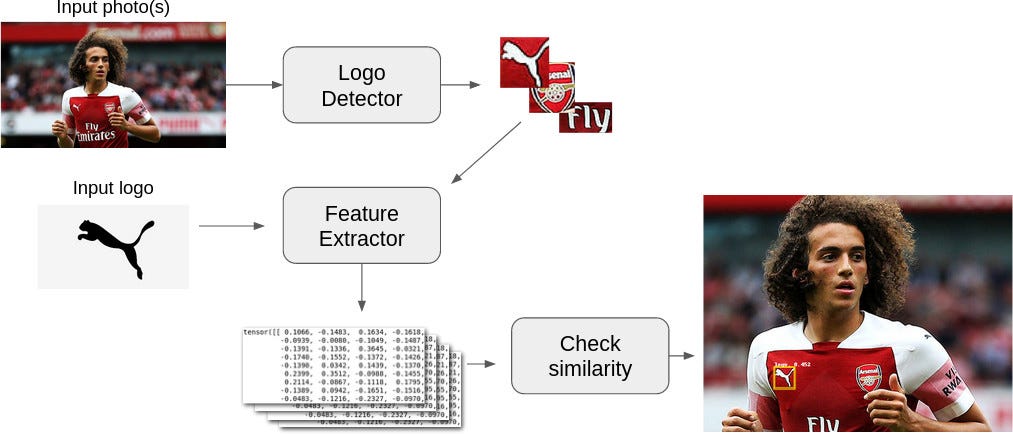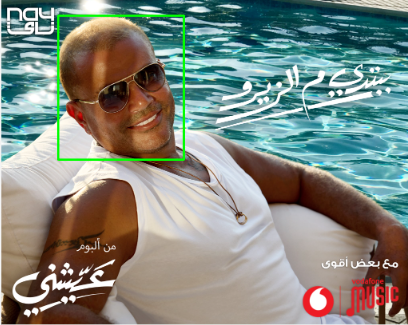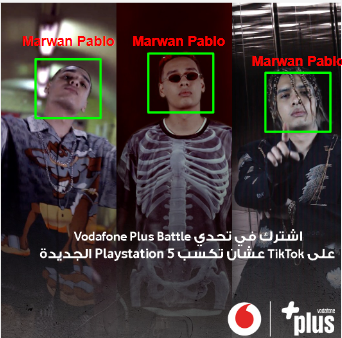From advertising and branding to media and entertainment, the ability to detect logos and celebrities from images has become increasingly important in today’s digital world. Companies are leveraging the power of artificial intelligence (AI) and computer vision to automate these tasks, saving time and resources while improving the user experience. In this article, we will delve into the techniques and applications of logo detection and celebrity recognition, exploring their impact across various industries.
Detect Logos And Celebrities From Images

Understanding logo detection algorithms and techniques
Logo detection algorithms employ advanced computer vision techniques to recognize logos within visual data. These algorithms analyze the unique features and patterns associated with logos, allowing for accurate detection even under challenging conditions such as occlusion or low resolution.
Role of deep learning in logo detection
Deep learning, a subset of AI, has revolutionized logo detection by leveraging the power of neural networks. Convolutional Neural Networks (CNNs) have shown exceptional performance in logo recognition tasks, enabling the detection of logos with high precision and recall rates.
Challenges in logo detection and their solutions
Despite significant advancements, logo detection still faces challenges such as partial occlusion, deformations, and variations in scale and rotation. Researchers are continuously exploring novel techniques like data augmentation, transfer learning, and domain adaptation to overcome these obstacles.
Celebrity Recognition
Exploring the concept of celebrity recognition
Celebrity recognition involves identifying famous individuals from images or videos. This technology relies on facial recognition algorithms that extract unique facial features and compare them against a database of known celebrities.
Application areas of celebrity recognition technology
Celebrity recognition finds applications in media and entertainment industries, allowing content creators to automate the tagging of celebrities in photos and videos. It also aids in security and surveillance systems, helping identify individuals of interest in real time.
Role of facial recognition algorithms in celebrity identification
Facial recognition algorithms use complex mathematical models to analyze facial landmarks, textures, and spatial relationships. By comparing these features with a vast database of known celebrities, accurate identification can be achieved.
Techniques for Detect Logos and Celebrities from Images
Image processing techniques for logo detection
- Image processing techniques, such as edge detection, feature extraction, and template matching, are employed to detect logos. These methods analyze pixel-level information to identify distinctive logo characteristics.
Utilizing machine learning for logo and celebrity recognition
- Machine learning algorithms, such as Support Vector Machines (SVM) and Random Forests, can be trained to classify logos and celebrities based on extracted features. These models can achieve high accuracy but require labeled training data.
Deep learning models for accurate detection and recognition
- Deep learning models, particularly CNNs, have demonstrated outstanding performance in logo and celebrity recognition. By training on large-scale datasets, these models can learn complex patterns and achieve state-of-the-art accuracy in detection and identification tasks.
Industry Applications
Logo detection in marketing and branding
- Logo detection plays a crucial role in monitoring brand visibility and assessing the impact of marketing campaigns. Companies can leverage logo detection to quantify ad reach, measure customer engagement, and optimize their marketing strategies.
Celebrity recognition in media and entertainment
- In media and entertainment, celebrity recognition technology simplifies the process of tagging celebrities in photos and videos. Content creators can efficiently organize their media libraries, enhance searchability, and provide an improved user experience.
Use cases in e-commerce and social media platforms
- E-commerce platforms can utilize logo detection to automatically recognize and categorize products based on their logos, improving search accuracy and enhancing the shopping experience. Social media platforms can also leverage celebrity recognition to detect and verify verified accounts, enhancing user trust.
Challenges and Limitations
Addressing ethical considerations in logo and celebrity detection
- As the logo and celebrity detection technology becomes more prevalent, ethical considerations arise. There is a need for transparency and consent when collecting and processing user data. Companies must prioritize user privacy and ensure compliance with relevant regulations.
Dealing with privacy concerns and data protection
- Logo and celebrity detection systems require the use of large datasets, which may contain personal information. It is essential to implement robust data protection measures, including anonymization and encryption, to safeguard individuals’ privacy and prevent unauthorized access.
Limitations and potential biases in the algorithms
- Logo detection and celebrity recognition algorithms may exhibit biases due to imbalanced training data or inherent algorithmic biases. Researchers and developers should be vigilant in identifying and addressing these biases to ensure fair and unbiased outcomes.
Future Trends and Advancements of Detect Logos and Celebrities from Images
Evolution of logo and celebrity detection technologies
- Logo and celebrity detection technologies will continue to evolve, incorporating more advanced AI algorithms and deep learning architectures. The future holds the potential for real-time, on-device detection with increased accuracy and efficiency.
Integration with augmented reality and virtual reality
- The integration of logo and celebrity detection with augmented reality (AR) and virtual reality (VR) can offer immersive experiences. Users can access contextual information about products or celebrities by simply pointing their devices at relevant images or objects.
Implications of emerging technologies like 5G and edge computing
- The deployment of 5G networks and advancements in edge computing will enable faster processing and real-time decision-making in logo and celebrity detection applications. This will unlock new possibilities and drive innovation across industries.
Conclusion
Logo detection and celebrity recognition technologies have revolutionized the way businesses operate in various industries. From marketing and branding to media and entertainment, these technologies offer valuable insights, enhance user experiences, and enable data-driven decision-making. As we continue to witness advancements in AI and computer vision, it is important to address ethical considerations, prioritize privacy, and mitigate biases to ensure responsible usage.
If you’re interested in exploring the capabilities of logo detection and celebrity recognition technologies, we invite you to request a demo from Aim Technologies. Experience firsthand how these innovative solutions can transform your business and unlock new opportunities. Don’t miss out on harnessing the power of visual understanding in your industry.
FAQs
How accurate are logo detection algorithms?
- Logo detection algorithms can achieve high accuracy rates, especially when trained on diverse and representative datasets. However, the accuracy may vary depending on factors such as image quality, occlusion, and variations in logo design.
Can logo detection be used for copyright infringement purposes?
- Logo detection technology can aid in identifying potential copyright infringements by detecting unauthorized use of logos. However, legal expertise and human verification are necessary to determine if an infringement has occurred.
Is celebrity recognition technology reliable in real-world scenarios?
- Celebrity recognition technology has made significant advancements and can provide reliable results in controlled environments. However, real-world scenarios with variations in lighting, poses, and occlusions may still pose challenges.
What are the potential applications of logo detection in the retail industry?
- In the retail industry, detect logos and celebrities from images can be used to automatically categorize and search products based on their logos. This improves the shopping experience, facilitates brand recognition, and enhances inventory management.
Are there any legal implications associated with celebrity recognition?
- Legal implications may arise when using celebrity recognition technology, particularly concerning privacy and consent. Compliance with privacy laws and obtaining necessary permissions are crucial to avoid legal repercussions.



